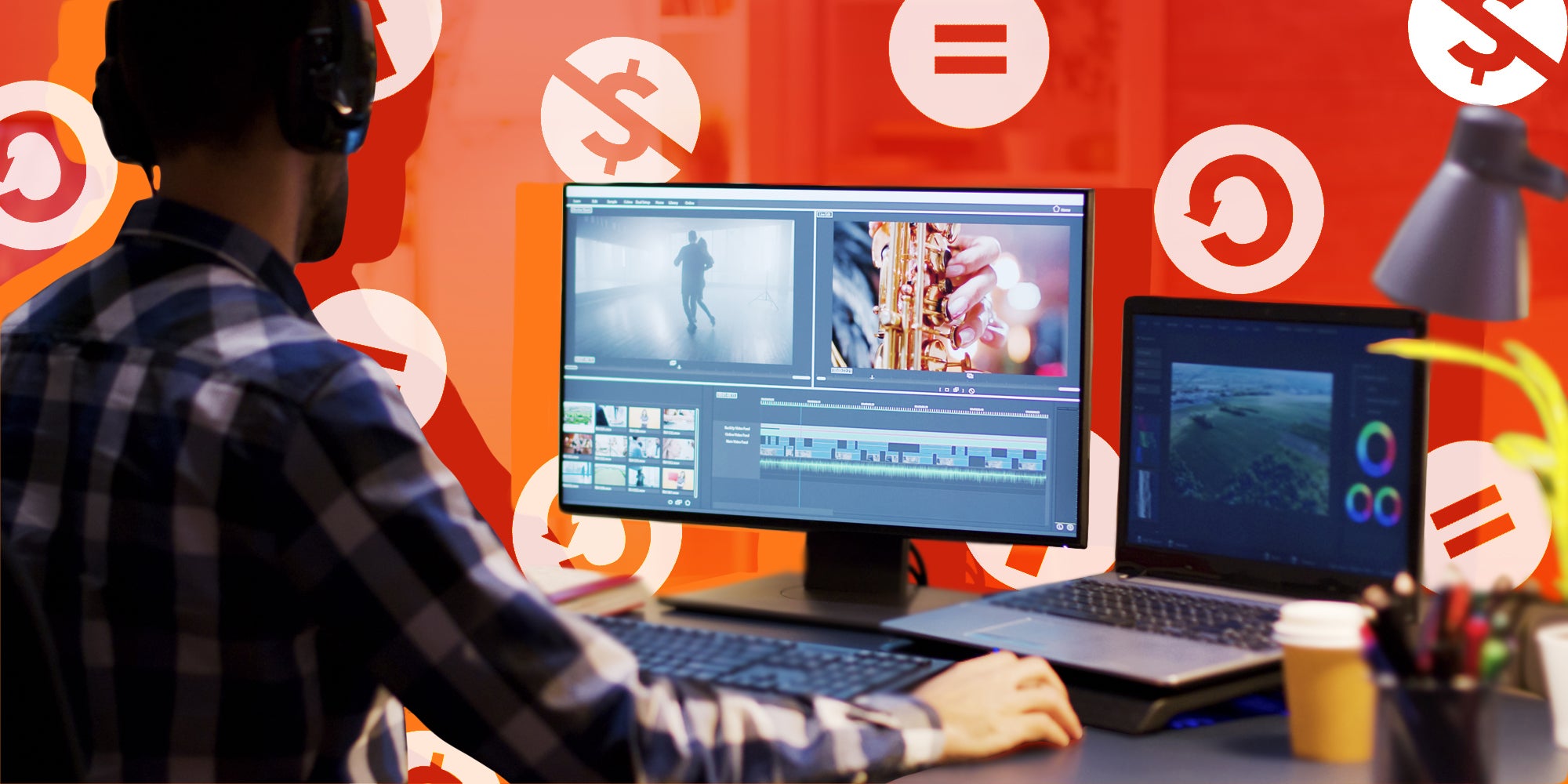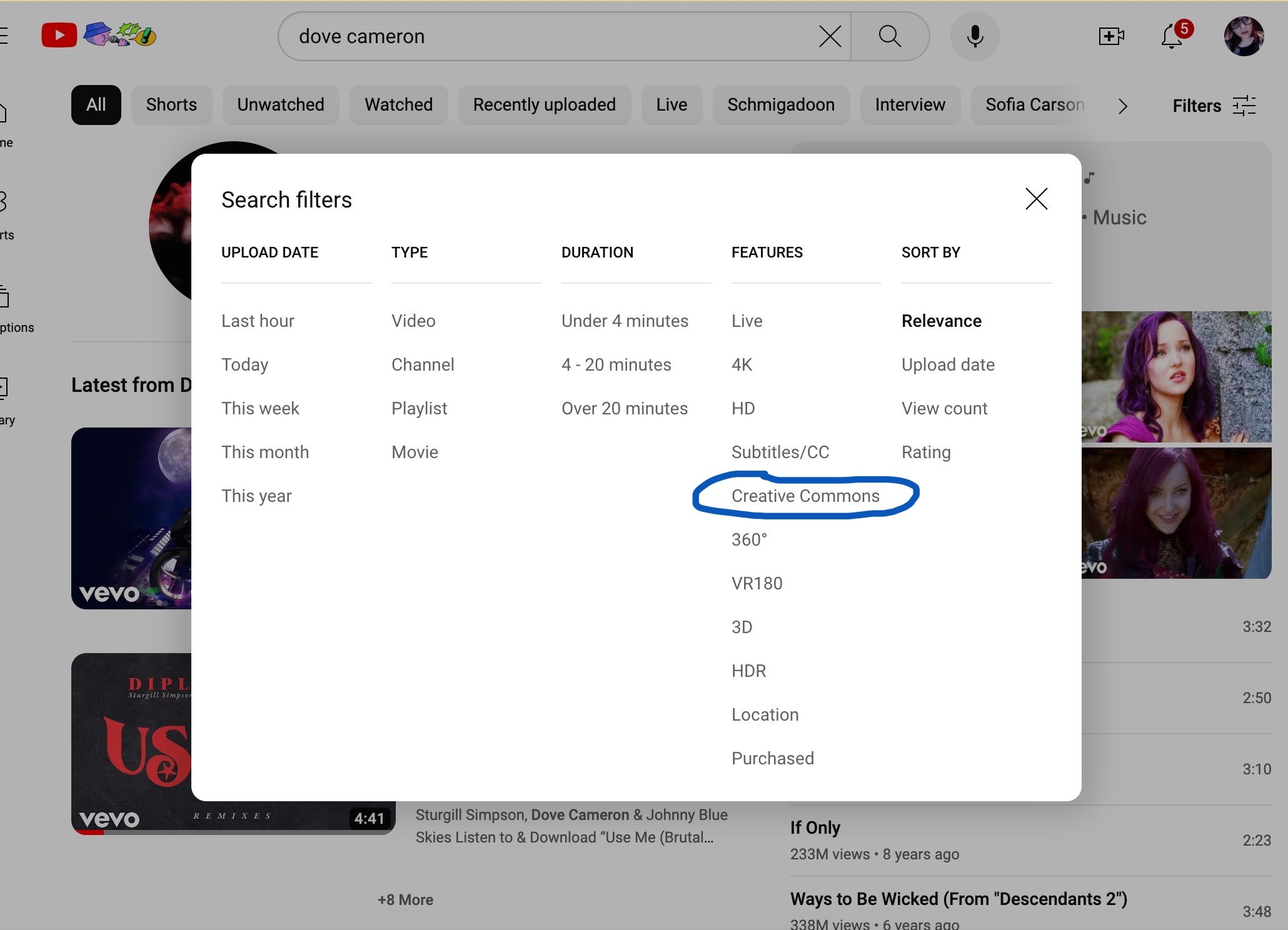
As a content creator, you will likely have numerous instances where you end up using someone else’s work in what you create, whether it’s a snippet of another video, music, a photograph, or something else entirely. Some of these things fall under fair use, or the original artist may have a revenue share deal with the platform on which you’re posting. Other times, you may encounter—or even seek out—works registered under Creative Commons licenses.
Creative Commons works can be a real benefit to creators, although there are some things it’s helpful to understand about how the licensing works, what these creations can be used for, and how to properly credit the original creators before diving in.
Creative Commons license meaning: What is Creative Commons?
Normally, when somebody creates something—like a story, a song, or a photograph—their authorship is protected under copyright law. This means that it is their intellectual property, and anyone who wants to reproduce it, sell it, remix it, or otherwise distribute it has to have that individual’s express permission to do so, which can become complicated.
Creative Commons licensing is a system that simplifies that process. Instead of a copyright holder making individual deals with companies or people to use their work, Creative Commons provides a flexible way for creators to grant broad permission to do certain things with their work. It doesn’t replace copyright but functions alongside it so that creators still retain some control.
Do you need permission to use a Creative Commons work?
You do not! That’s one of the greatest things about this—it grants blanket permission for anyone to use the work as they wish so long as they follow the terms of the specific Creative Commons license, meaning the rules will be laid out explicitly for how it can be used and what type of credit is required. You don’t have to contact the copyright holder at all.
What types of works fall under Creative Commons licensing?
If a work can be copyrighted, it can also be licensed under Creative Commons. Examples include, but are not limited to, videos, music, books, articles, screenplays, comics, websites, poetry, and photos.
What are the types of Creative Commons licenses?
There are four rights granted by Creative Commons licensing that address the rules the person using the work may be bound by while doing so.
Creative Commons license types:

Attribution (BY): Specified credit (aka attribution) must be given to the creator when distributing, modifying, or otherwise using the work in any way.
Share-alike (SA): If you remix, modify, or otherwise change the work, it must be distributed under the same Creative Commons license as the original work.
Non-commercial (NC): The work or anything derived from it by the licensee can only be used for non-commercial purposes.
No derivative works (ND): No derivative works are allowed—the original work must stay intact.
These four rights are then combined into six different licensing options.
Creative Commons license types:
CC BY: A work can be copied, performed, shared, modified, etc, as long as it is attributed correctly to the copyright holder.
CC BY-SA: This license requires the correct attribution as well as for any derivative works to be licensed similarly.
CC BY-ND: The original work must be attributed correctly and cannot be remixed or otherwise altered.
CC BY-NC: Attribution is once again required, and the licensee can only use the original work or any derivatives for non-commercial work.
CC-BY-NC-SA: The original license must be applied to any derivative works, none of which may be used for commercial purposes, and attribution is still required.
CC-BY-NC-ND: No derivative or remixed works are allowed, and the work can only be used for non-commercial purposes, but otherwise it can be shared freely as long as it is attributed properly.
You can determine which license a work is under based on the combination of symbols and abbreviations used in relation to it. Following the terms of the license is important, and failing to do so is considered copyright infringement—so make sure you know which license you’re working with!
What does non-commercial use mean?
For the purpose of Creative Commons licensing, non-commercial is defined as something that’s “not primarily intended for or directed towards commercial advantage or monetary compensation.” In other words, if you are incorporating a work that only allows non-commercial usage into something you’re creating, you have to do so without the intent to directly profit off of it.
Can Creative Commons licensing be revoked?
Copyright holders can decide to stop distributing their original work under a Creative Commons license at any time, but that decision will not revoke the license of anyone already using said work—as long as the original terms are being followed correctly.
What are the advantages and disadvantages of Creative Commons licensing?
There are two ways to look at this—from the perspective of the person creating a wholly original work and licensing it under Creative Commons and from the perspective of someone utilizing a Creative Commons work in their own creations. Let’s look at the latter.
Advantages of Creative Commons:
- You’re not starting from scratch. Maybe you’re just grabbing some images for a video, or maybe you’re remixing a whole song. In either event, repurposing content cuts down on the original work you have to do.
- Finding works to use can be quick, easy, and free. You don’t have to spend time writing to the copyright holder and requesting permission to use their work, or drawing up contracts to do so—all you have to do is follow the rules of the license and attribute the work correctly.
- It promotes collaboration and creativity. Sharing and reimagining and feeling inspired by other works can help build a creative community and encourage connections with other creators who are using the same source material, or even your remixed work.
Disadvantages of Creative Commons
- License limitations. You’re bound by the terms set forth by the original creator, which could mean your own work falls under the same license or that you can’t use it commercially—or that other people can use your derivative work commercially, depending.
- Limited control over who uses your work. If your derivative work must subsequently be released under Creative Commons, you have no control over who uses it or how they use it.
- Understanding the terms can be complicated. While there’s a lot that’s simple about Creative Commons licensing, diving into the specifics of attributions and what’s allowed vs what’s not for each license/work may be challenging depending on your needs.
How do you properly attribute a Creative Commons work?
The specific hard requirements when attaching attribution to a work you are repurposing or redistributing can vary based on which version of Creative Commons the original was licensed under. Those details can be found on their website.
But the official recommendation is to include the Title, Author, Source, and License of said work. In other words, properly attributing credit to a photo might look like this:

If you’re using a Creative Commons work in a video on YouTube, TikTok, or some other social media site, the idea is the same. You’ll want to note the title of whatever you used in the clip, the author, what license it’s under, and include a link to the source in your description box.
The link is particularly important because it allows other users to go check out the original, while the license lets people know that it’s under Creative Commons and what, specifically, is able to be done with it.
What’s the difference between Creative Commons licensing and public domain?
In the United States, a work enters the public domain when its copyright expires. The specific amount of time that takes varies based on when the work was created and/or published, but modern works will typically fall into public domain 70 years after the author dies.
This is different from Creative Commons, where the author retains copyright. However, there is a Creative Commons option called CC0 that is essentially the equivalent to public domain. If a work is licensed under CC0, the creator has given up their copyright and the work can be used for commercial work, to create derivative projects, and no attribution is required.
For creators considering licensing their own work in this manner, it’s important to note that CC0 licensing cannot be undone.
How do I find Creative Commons works?
The Creative Commons website has a search function that provides an excellent starting point for seeking out licensed works that you can use.
Additionally, some media platforms allow you to filter content so that you only see Creative Commons works. On YouTube, for example, if you search for something as you normally would, then click the “Filters” slider on the far right of the screen, you can select “Creative Commons” and find videos that match your query and licensing needs.

How do I license my work Creative Commons?
Whether you’re interested in licensing wholly original work under Creative Commons, or if you need to license a derivative or remixed work per the terms of an existing license, the official website can walk you through everything.




